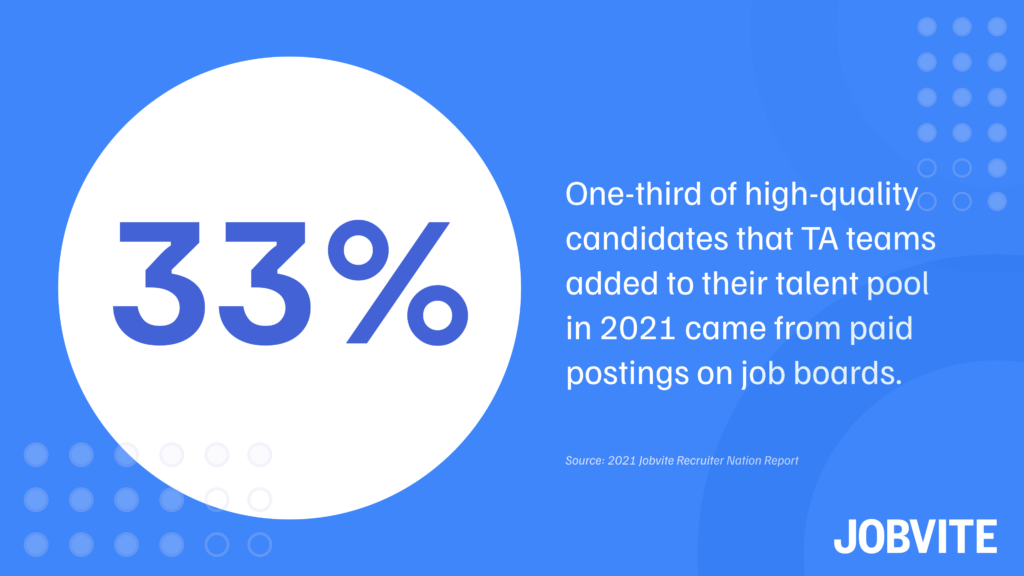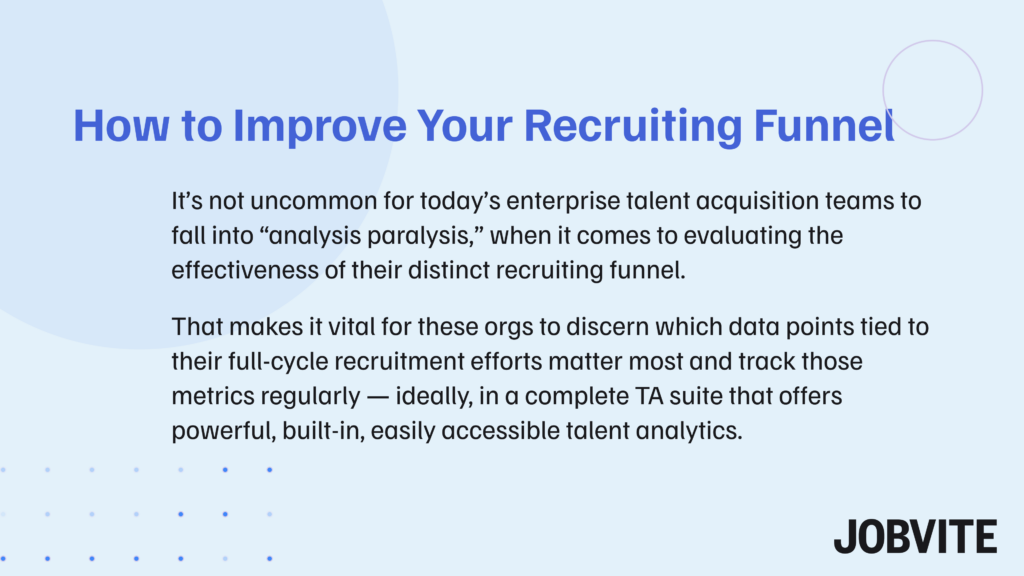
While the labor market in flux, now is the perfect time to reassess how you build awareness with active and passive job seekers and nurture candidates of interest through your funnel with targeted recruitment marketing campaigns. Specifically, ones that help you and your recruiting org:
- Tap into both new and existing talent communities that yield the “ideal” candidates
- Turn your careers page into a high-converting channel for your sourcing strategy
- Convince “on-the-fence” prospects to apply for jobs on your careers site and via job ads
- At the end of the day, bolster your talent pool and fill open positions quickly and efficiently
If you need help refining your recruitment marketing efforts, you’ve come to the right place.

Improving your recruitment marketing approach
A well-built recruitment marketing campaign that both leads to a stellar candidate experience for prospective hires and helps your talent team ultimately fill critical job openings intelligently and expeditiously.
That’s the goal for recruitment marketing teams at enterprises today.
It’s also a fairly achievable one — so long as your TA team utilizes a unified applicant tracking system from which you execute the bulk of (if not all) recruitment marketing activities and monitor your progress with them.
Successful recruitment marketing campaigns result when talent teams approach candidate engagement holistically, resulting in a flow of top-notch candidates to apply for their vacancies. It involves:
- Personalizing communication to individual job seekers
- Nurturing those individuals through their respective recruitment journeys
- Encouraging candidate conversion each step of the way
Arguably the most important element of a highly recruitment marketing campaign, though, is to execute a nuanced approach to converting top talent — not simply casting a wide net and hoping for the best. (That is, “throwing darts in the dark” and engaging whichever candidates engage/apply.)

5 tips to convert qualified candidates and advance them through your recruitment marketing funnel
“Recruiters must become more like marketers,” human resources expert Tim Sackett recently explained at SHRM Talent Conference & Expo 2023. “Your job ad should be mission- and vision-driven. It should not be compliance-driven. You can have fun with it. You can be creative. Think about what it would take to get someone to apply. It’s certainly not a bulleted list of requirements.”
And Tim’s right. Enterprise talent acquisition teams (read: yours) shouldn’t be blasé with their recruitment marketing approach.
Make it memorable. Showcase your employer brand and company culture. Use unique and compelling visuals. In short? Stand out from other employers will boring and forgettable campaigns.
(Ones that only waste their marketing spend and lead to low ROI).
With that in mind, here’s how to build your candidate campaigns the right way — and gradually refine your recruitment marketing tactics and strategy at large by taking advantage of insights in your ATS.
Step #1: Define your target audience
Simply put, Targeted Audience Planning (TAP) is the practice of:
- Identifying which roles your company needs the most
- Learning all about the candidate types who’ll succeed in each role
- Grouping the candidates into specific audiences to more easily build personalized content
- Communicating this content via their preferred mode of communication
The Evolve Talent Acquisition Framework defines three types of audiences, including key audiences, strategic audiences, and relationship audiences.
Recruiters for Fortune 500 companies and other large organizations know that attracting an entry-level hourly worker is much different than attracting a senior executive.
But, we’re talking about taking it to the next level by integrating this TAP concept to really understand who your audiences are and to ask questions like “How are these roles prioritized?” and “What is their importance to our organization’s success?“ to align with your corporate goals.
Then, you can develop a campaign strategy for each audience based on this information.

Step #2: Think beyond pipeline-building
It’s not enough to build a talent pipeline and hope at least some high-quality candidates enter it. Rather, it’s about building a talent pool to keep candidates warm and nurtured.
Here are a few simple ways to expand your employer presence and build out a wider candidate pool:
- Incentivize current employees to refer their personal network to your company with a rewarding referral program.
- Enable current employees to easily post your company’s job postings via social media, including Twitter, Linkedin, Facebook.
- Provide easy ways for potential candidates to opt into your email list. This will help you gather pertinent details about skills/experience and target future communications appropriately
- Create segmented talent pools for the different roles you are filling to reduce the time required to source for brand new candidates
- Keep these passive candidates warm by continually engaging with them through social and email outreach campaigns
- Keep active candidates warm by following up with personalized messages after a recruiting event
Step #3: Engage top talent continuously
Continuous candidate engagement is about a philosophy of applying a candidate-centric approach to attract top talent. It’s also about a mindset: embracing a new way to have ongoing conversations with candidates, in real-time and across all channels. More to the point, it’s about:
- Supporting these areas with tools that facilitate communication
- Ensuring all engagement is ongoing, seamless from hiring to onboarding
- Mobile so candidates, recruiters, and hiring managers can connect anywhere
With a candidate-centric approach, you’ll be making a shift that drives immediate and long-term value around operational efficiency and candidate engagement, while steadily impacting your ability to reduce time to fill for that precious talent.

Step #4: Monitor each campaign’s progress
Move the campaign forward, but don’t assume that’s where it ends. Take note of the outcomes, monitor your KPIs, and make adjustments as needed. The talent acquisition industry is constantly changing — and so should your efforts to reach candidates.
Identify your recruiting bottlenecks. Is it taking the hiring manager a long time to get back to you? Are you not getting enough applicants applying? Have you created a seamless mobile experience?
With these identified, you can develop a game plan on how to tackle them.
Step #5: Use data in your ATS to improve
The right CRM is a true non-negotiable in building the best candidate campaigns. Candidate Relationship Management (CRM) is a recruitment tool that empowers recruiting teams to find and engage their talent networks at scale quickly.
A recruitment CRM allows you to meet candidates where they are, turn passive talent into engaged applicants, and ensure you have the right talent identified and engaged before your business needs them.
Engage candidates in the channels they’re most responsive to, whether that’s email, text, or social media. A recruiting CRM helps automatically manage communications, send proactive campaigns, and even broadcast your open roles to job boards.
By improving efficiency in the sourcing and recruitment process, you can maximize your hiring results while reducing your hiring costs and manual effort.
Effortlessly publish your job postings to 20+ job boards, including boards dedicated to specific audiences and industries. Pull candidate information from multiple resume databases into a single candidate record.
Want to learn how an ATS + CRM can help you convert more qualified candidates? Request a personalized Jobvite demo or watch our on-demand product tour today.
